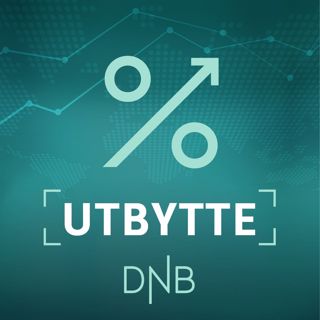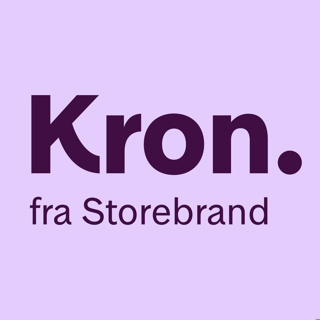
Blogcast #70: Pricing Table Topics
This is an Impact Pricing Blog published on July 27, 2022, turned into an audio podcast so you can listen on the go. Read Full Article Here: https://impactpricing.com/blog/pricing-table-topics/ If you have any feedback, definitely send it. You can reach us at mark@impactpricing.com. Now, go make an impact. Connect with Mark Stiving: Email: mark@impactpricing.com LinkedIn: https://www.linkedin.com/in/stiving/
2 Sep 20222min
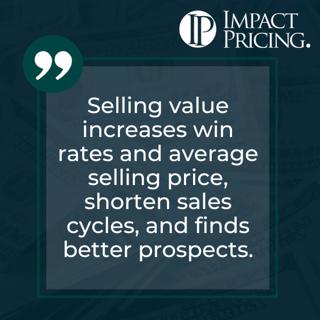
Memecast #73: Ace of Hearts: Win Rates and Average Selling Price
This one is the Ace of Hearts from the Selling Value card deck. Selling value really does do a lot of things. But if you imagine for a second that a buyer has some expectation of how much value they're going to get from our product. That is a good indicator of their willingness to pay, it's a good indicator of how urgent it is that they want to solve the problem or buy the product. But what if we had the ability to increase the amount of value that person expects to get from our product? For the sake of argument, let's say we 10x it. We make our product really valuable to them. All of a sudden, they're willing to pay more. They want it. They want it now. They want it faster. And so, we're going to increase our average selling price, we're going to shorten the sales cycles. And of course, if they believe we're going to deliver a 10x, they're going to buy from us instead of from our competition. And once we can recognize those buyers who really are going to get a lot of value from our product, then we get better prospects as well. So, it turns out when we can sell value, we really do increase win rates and average selling prices. We hope you enjoyed this memecast. This is also an example of how Pricing Table Topics works. Grab a deck of our cards, pull a random card, read the saying, and then talk for one to two minutes about what the card says. This will improve your understanding and more importantly, your ability to communicate important concepts. If you have any questions or feedback, please email me mark@impactpricing.com. Now, go make an impact. Connect with Mark Stiving: Email: mark@impactpricing.com LinkedIn: https://www.linkedin.com/in/stiving/
31 Aug 20222min
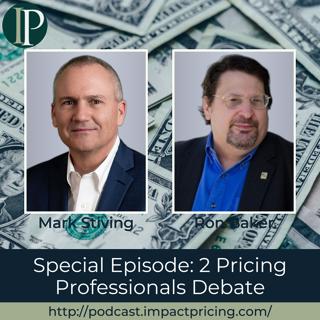
Special Episode: 2 Pricing Professionals Debate
Mark Stiving is a widely recognized pricing expert and marketing pro who teaches companies how to boost revenues and realize their true value. He is the host of the Impact Pricing podcast, helping people win more business at higher prices through value, and has authored three books which all revolve around pricing. Ron Baker is the Founder of VeraSage Institute, dedicated to helping professional knowledge firms bury the billable hour and trash timesheets. He has published seven books around the topics of business and pricing, and also is a radio talk-show host for The Soul of Enterprise. In this episode, Ron engages in a pricing metric discussion with Mark as they share their insights on cost-plus, hourly pricing, and subscriptions. Why you have to check out today’s podcast: Deep dive into discussions about different pricing metrics, focusing on cost-plus, hourly, and subscriptions Find out why putting time in your service and charging by the hour isn’t an ideal way to charge clients Understand why providing value is better than charging hourly or using cost-plus pricing “There's always going to be people and businesses that use cost-plus and other inferior methods like hourly. They're going to be out there, but they're just not where my focus is. My focus is on the other end, trying to help people price and create more value so they can capture more value. I'm not interested in working for people that want to price in an inferior manner, because I think that means they're not providing enough value to you.” – Ron Baker Topics Covered: 01:17 – Mark’s five top reasons/times when cost-plus pricing makes sense 04:36 – Reacting to Mark’s five reasons / doing value-based pricing along with cost-plus pricing 08:13 – Pricing in micro and macro level businesses: cost-plus vs value-based 11:37 – Why Ron refuses to pay by hourly billing + how auto mechanics price their work 16:24 – Talking about Ron and Colin’s difference in perspectives 18:04 – How Mark charges clients ‘hourly’ and what Ron has to say about it 23:04 – Discussion around subscription + today’s topic in general: pricing metric 27:25 – Mark’s tax guy + why hourly billing isn’t ideal for Ron 31:17 – On announcing a price increase: Do something nice for your customers Key Takeaways: “If I could categorize everything I just said, I'd categorize it in two categories. One is sometimes, customers demand it – so that would be Apple and government, and sometimes, it's just more efficient as a business to do cost plus than it is to do value-based pricing.” – Mark Stiving “In the world of cost plus and efficiencies, one could make the argument. I'm not saying this is true by any means, but one could make the argument. If I was in a very low margin, highly competitive business, it might be less expensive and more efficient to just do cost plus than to spend time trying to figure out what each customer's willing to pay me.” – Mark Stiving “One of my favorite sayings is customers hate price increases, but they'll hate it a little bit less if you blame increasing costs.” – Mark Stiving “The billable hour is what I'm crusading against, but on a larger perspective, the billable hour is cost-plus pricing.” – Ron Baker “At a macro level, there's no way that costs justify price or determine price. Can't be. Otherwise, no business would ever go bankrupt.” – Ron Baker “If somebody really did abuse you, then why would you ever work with that person?” – Ron Baker People / Resources Mentioned: The Soul of Enterprise:https://www.thesoulofenterprise.com/ Colin Jasper:https://www.linkedin.com/in/colin-jasper-7a401213/ Win Keep Grow:https://www.amazon.com/Win-Keep-Grow-Accelerate-Subscription/dp/1631954784 Time’s Up:https://www.amazon.com/Times-Up-Subscription-Business-Professional/dp/1119893526 Marco Bertini:https://marcobertini.com/ The Ends Game:https://marcobertini.com/book/ Connect with Ron Baker: LinkedIn:https://www.linkedin.com/in/ronbaker1/ Connect with Mark Stiving: LinkedIn:https://www.linkedin.com/in/stiving/ Email: mark@impactpricing.com
29 Aug 202237min

Blogcast #69: Subscribe to Heated Seats in a BMW
This is an Impact Pricing Blog published on July 20, 2022, turned into an audio podcast so you can listen on the go. Read Full Article Here: https://impactpricing.com/blog/subscribe-to-heated-seats-in-a-bmw/ If you have any feedback, definitely send it. You can reach us at mark@impactpricing.com. Now, go make an impact. Connect with Mark Stiving: Email: mark@impactpricing.com LinkedIn: https://www.linkedin.com/in/stiving/
26 Aug 20223min
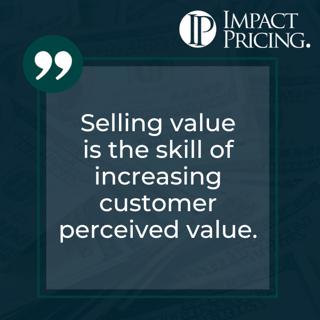
Memecast #72: Ace of Spades: Stacking the Deck in Your Favor by Increasing Customer Perceived Value
This meme is the Ace of Spades from the Selling Value card deck. Selling value really is the skill of increasing customer perceived value. If you think about it, our customers don't really know how much value they're going to get from our products. And yet we as salespeople, product people, pricing people, we've seen other customers use our products. We've seen all the different places where they get value from our products. And if we've done a really nice job, we've been able to quantify some of that value that some of our previous clients have gotten. Doesn't it make sense then that in a sales situation we find a way to help this buyer, someone who's evaluating our current product, to learn about and understand all the different ways our product might be able to add value to them. And once we can do that were increasing the amount of value that customer perceives for our product. This is how we win more deals at higher prices. So, selling value really is the skill of increasing customer perceived value. We hope you enjoy this memecast. This is also an example of how Pricing Table Topics works. Grab a deck of our cards, pull out a random card and read the saying. Then talk for one to two minutes about what the card says. This will improve your understanding, and more importantly, your ability to communicate important concepts. If you have any questions or feedback, please email me mark@impactpricing.com. Now go make an impact. Connect with Mark Stiving: Email: mark@impactpricing.com LinkedIn: https://www.linkedin.com/in/stiving/
24 Aug 20222min
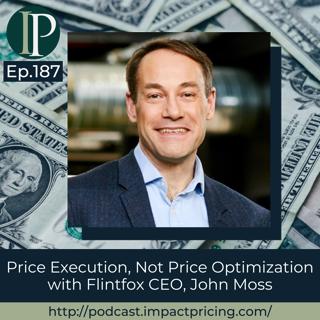
Price Execution, Not Price Optimization with Flintfox CEO, John Moss
John Moss is the CEO of Flintfox International, a pricing software company with world class IP in the areas of pricing and revenue management. He’s previously worked as the Chief Strategy Officer and also General Manager of MYOB. John is also trained to use explosive and radioactive devices. In this episode, John talks about the work they do at Flintfox. He explains why pricing models should change in line with the updates constantly happening at present on software. Additionally, Mark and he discuss the complexity of pricing, especially in these days of high inflation. Why you have to check out today’s podcast: Discover why pricing models in software businesses should change from time to time Understand the current situation and complexities in pricing, especially in this time of high inflation Find out how much of a game-changer it will be to have organizations focus more on pricing and not just in cost reduction “For many organizations, pricing has been off to the side and somebody who's got a quantitative bent will do that and look into it. I think there's an increasing need to employ experts in the organization that understand pricing, that understand pricing models, how you create value, and can help you manage through the current period of uncertainty.” – John Moss Topics Covered: 01:18 – How John got into pricing 02:37 – Lessons learned as they transitioned from transactional to subscription pricing 04:14 – Talking about the work Flintfox does 06:51 – What makes Flintfox different from other pricing software companies? 09:40 – Discussion about the complexity of pricing nowadays 11:20 – Avoiding channel conflict and posting things for the public to see 13:25 – The challenge of increasing prices during this period of inflation 18:02 – John, business software, and value-based pricing 22:36 – Pricing table topics: “Fixed costs never matter to pricing. Never, never, never.” 25:04 – John’s pricing advice Key Takeaways: “Software is no longer build something, release it, and it stays stable and constant forever. Software nowadays is constantly evolving and changing, and so the pricing model for that product had to change as well.” – John Moss “It's increasingly important, I think, to have a good data set and an integrated data set to be able to understand exactly how your product portfolio is performing and what margins you're making.” – John Moss “We're seeing more people have the confidence to put through a higher increase in the expectation that they do it once and maybe it lasts for 9-12 months, as opposed to putting through 3% now and then come back in two or three months’ time for another 3%, which that sort of attritional increase is probably less well received by customers than a big bang.” – John Moss “It's a consequence of software. What young people and you and I now expect is that software gets better all the time. I mean, we all see it every day. Every app we have on our phone gets updated all the time incrementally. But some of these applications do improve functionality quite significantly over a number of years. And so that's what you're paying for, effectively – the fact that the developers are still working on this product.” – John Moss People / Resources Mentioned: Flintfox International: https://www.flintfox.com/ MYOB: https://www.myob.com/ Microsoft: https://www.microsoft.com/ Connect with John Moss: LinkedIn:https://www.linkedin.com/in/johnrmoss/ Connect with Mark Stiving: LinkedIn:https://www.linkedin.com/in/stiving/ Email: mark@impactpricing.com
22 Aug 202228min

Blogcast #68: Ballet, Football, Pricing and Sales
This is an Impact Pricing Blog published on July 13, 2022, turned into an audio podcast so you can listen on the go. Read Full Article Here: https://impactpricing.com/blog/ballet-football-pricing-and-sales/ If you have any feedback, definitely send it. You can reach us at mark@impactpricing.com. Now, go make an impact. Connect with Mark Stiving: Email: mark@impactpricing.com LinkedIn: https://www.linkedin.com/in/stiving/
19 Aug 20223min
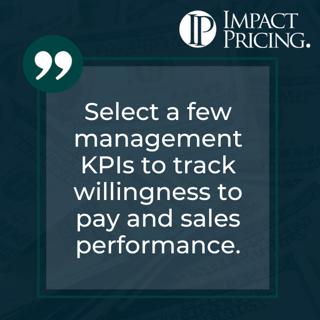
Memecast #71: Select KPIs
Possibly my single favorite KPI in the world of pricing is average selling price. Are we managing average selling price per product, average selling price overall across the portfolio. If you have a single product that has a price on it and you can monitor that average selling price, that gives you a great indication of what's going on in your marketplace, how well we're selling value. If you can monitor average selling price by salesperson, now we're getting a great indicator of which salespeople do a good job at selling value and which ones don't. If you can't manage average selling price, maybe you're going to have an average deal size. How big are the opportunities that we're facing, that we're being able to bid on? And which ones of those are we winning or not? But my recommendation, find some KPI, maybe two or three, that are a great indicator of how well our customers are perceiving our value, which means their willingness to pay and how well our salespeople are selling value. Track them over time. Watch for the anomalies. Watch for the changes. And use those as indicators to see if you can figure out what's going on in your marketplace. We hope you enjoyed this memecast. This impactful insight came from the book, Selling Value, which I wrote to help salespeople win more deals at higher prices. If you have any questions or feedback, please email me mark@impactpricing.com. Now go make an impact. Connect with Mark Stiving: Email: mark@impactpricing.com LinkedIn: https://www.linkedin.com/in/stiving/
17 Aug 20222min








